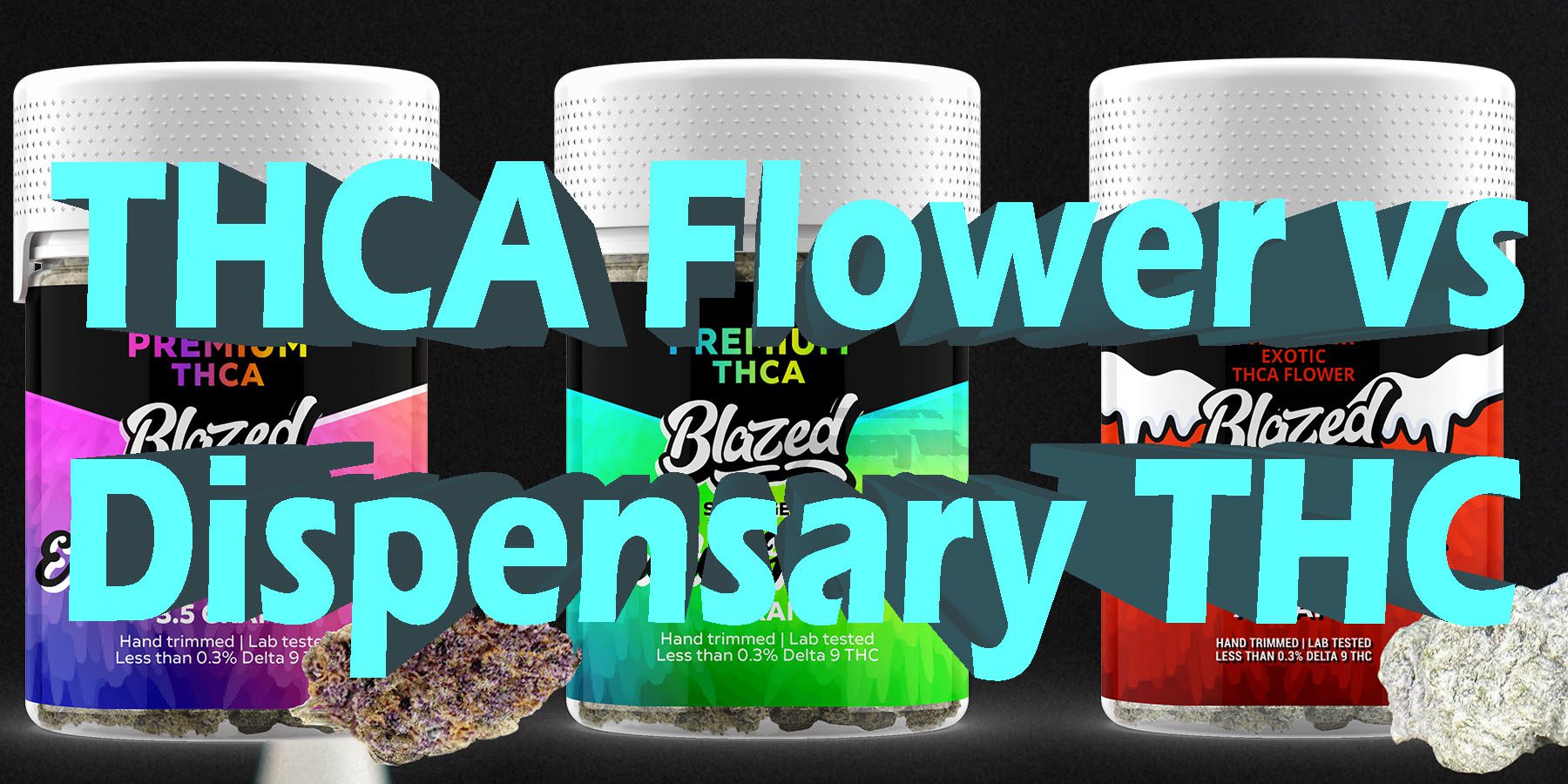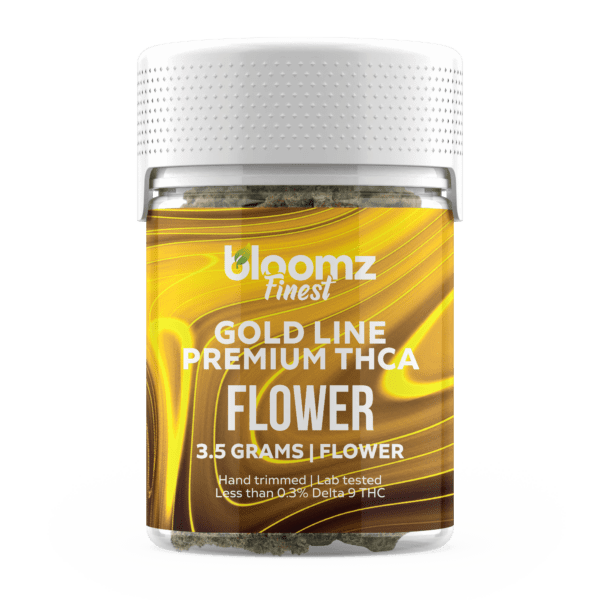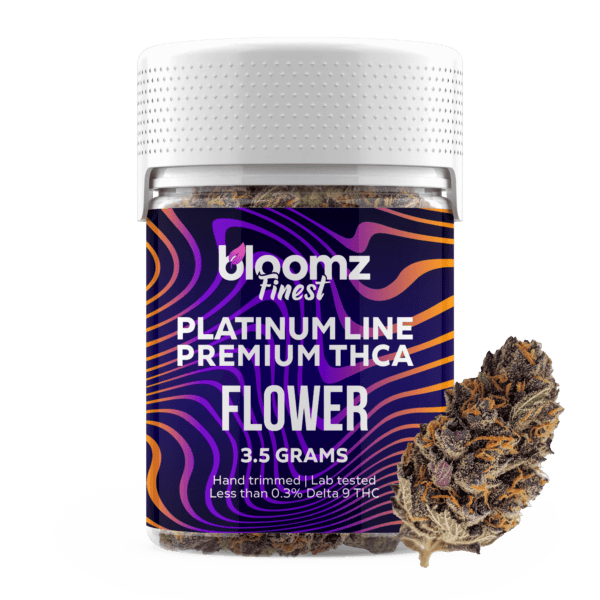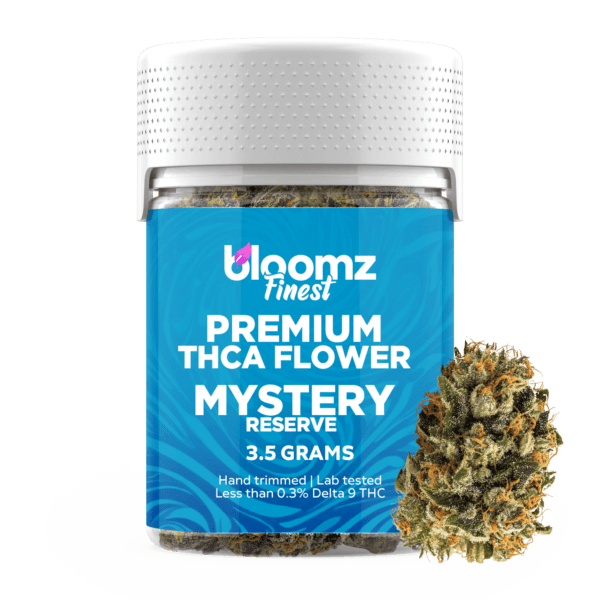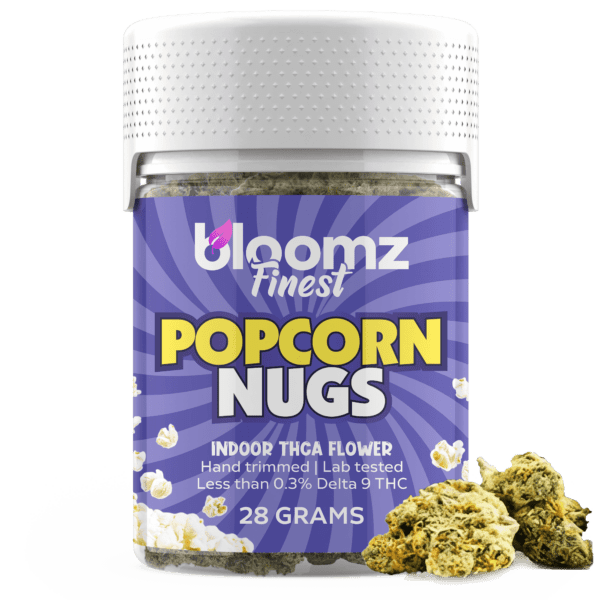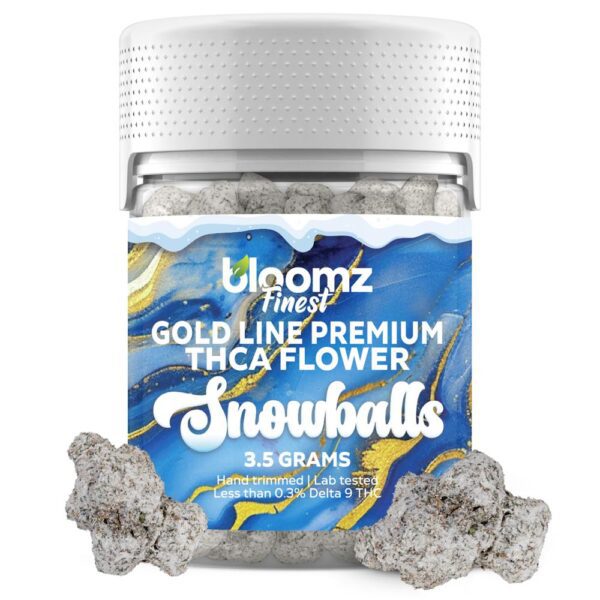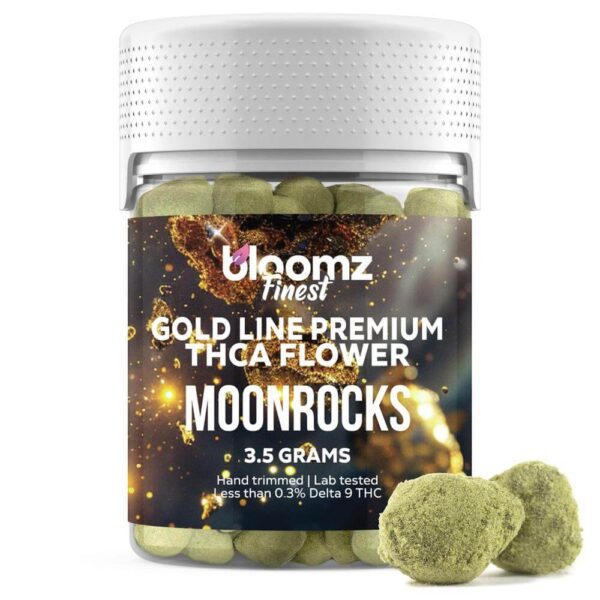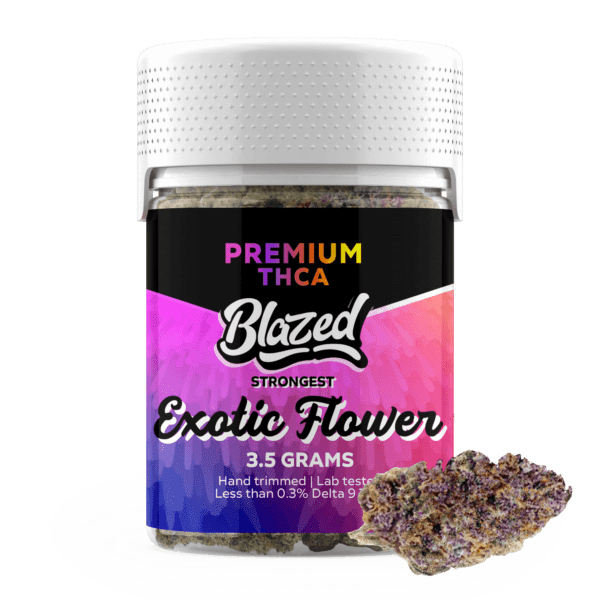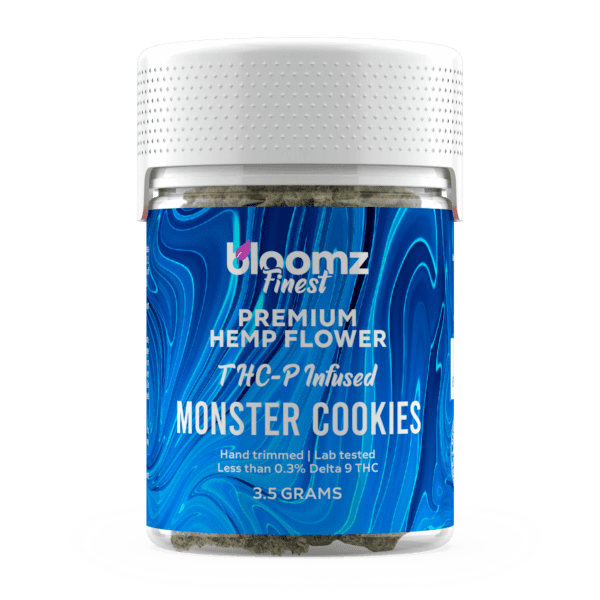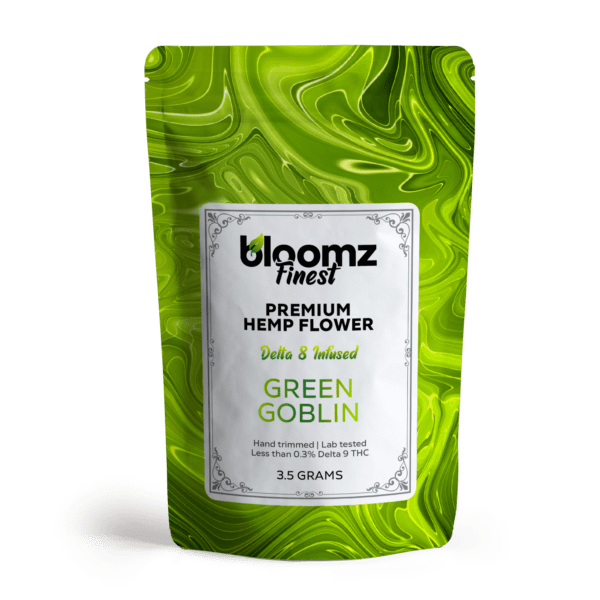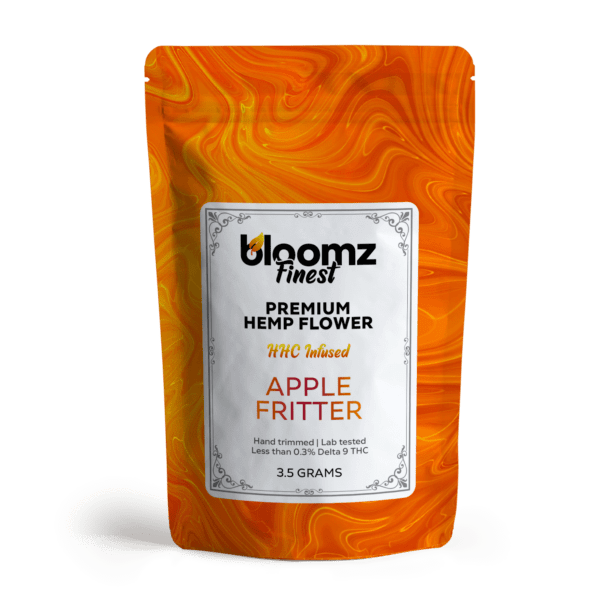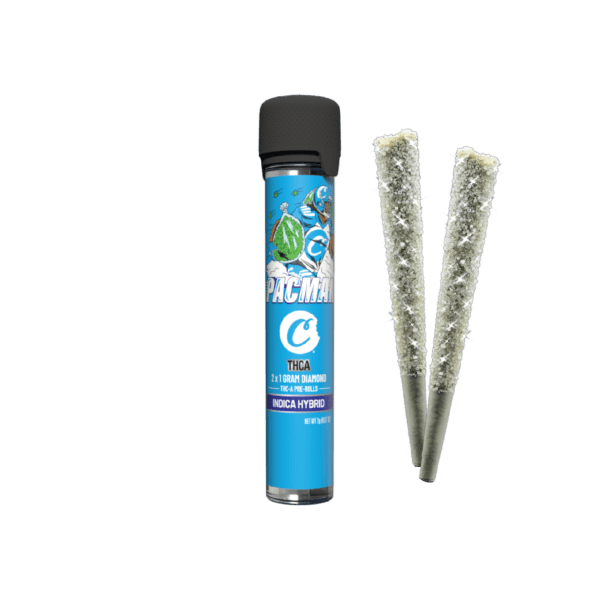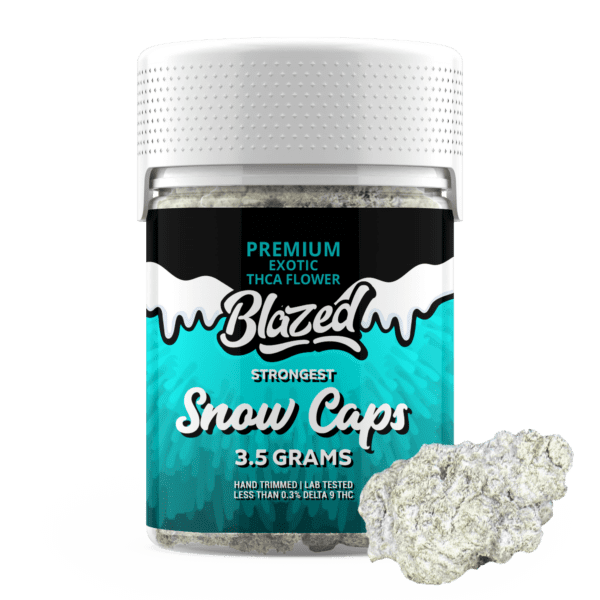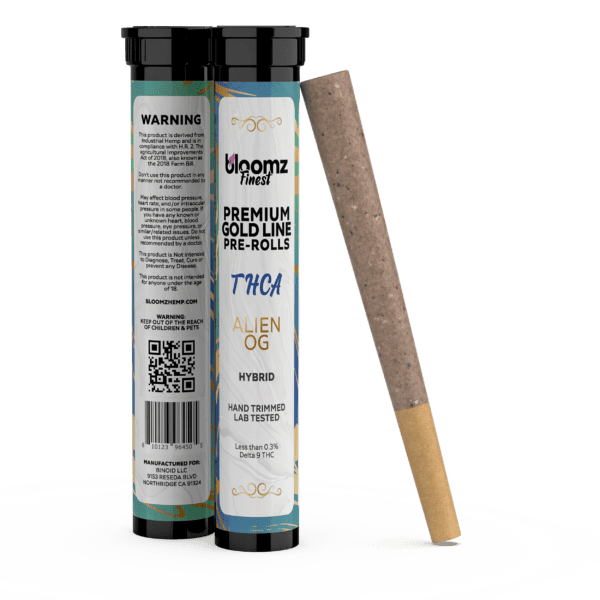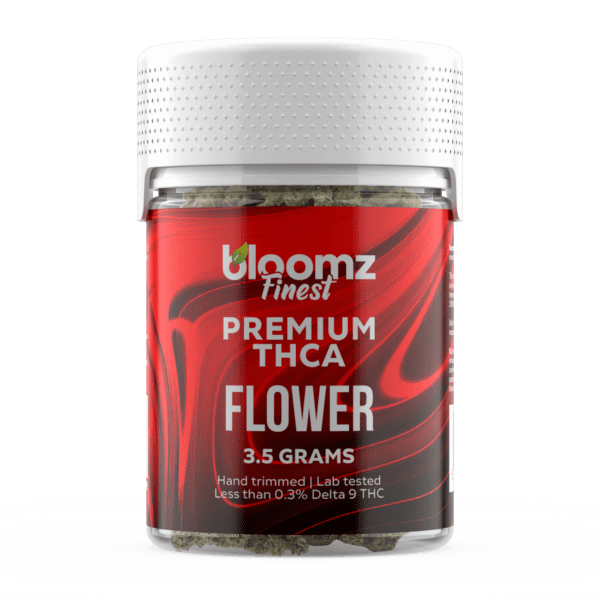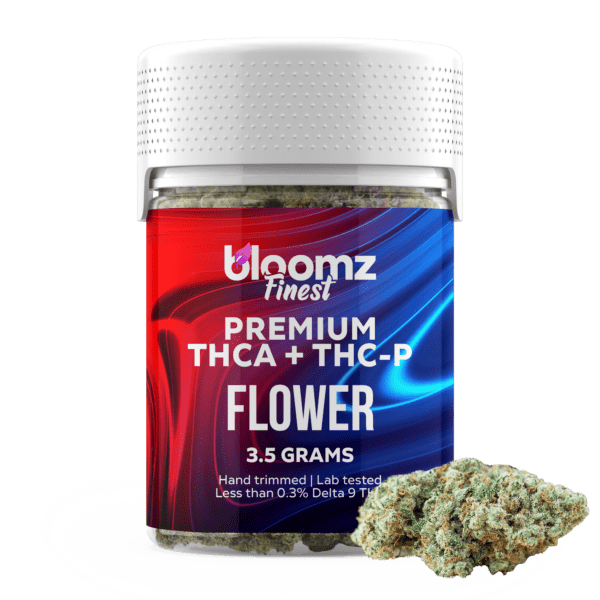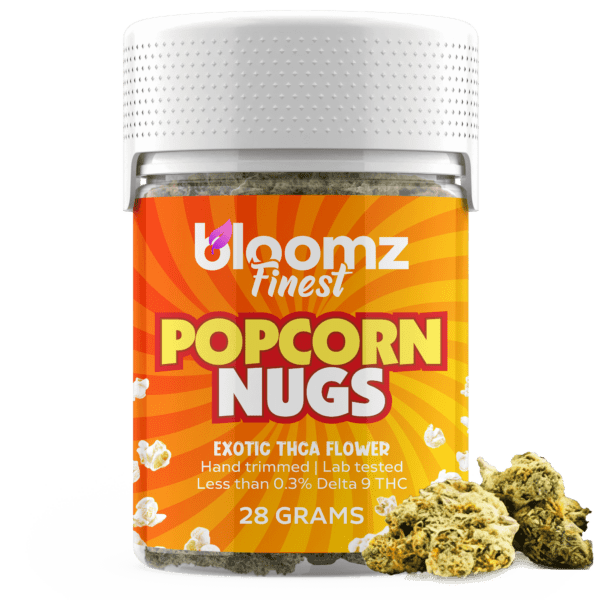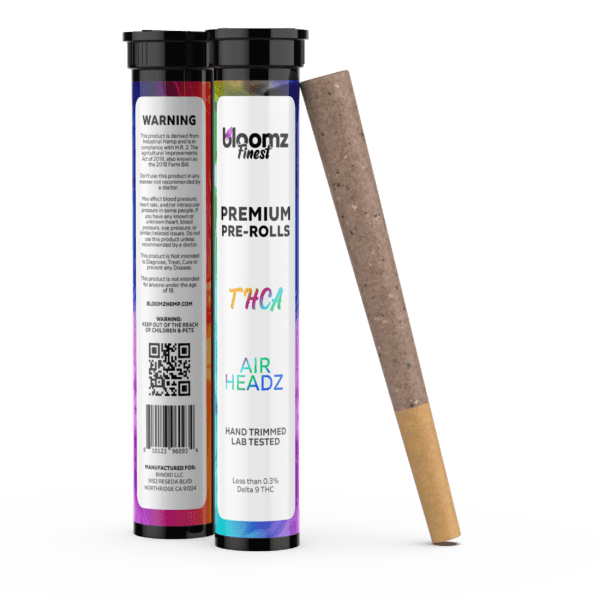The modern consumer is navigating an era of unprecedented choice, a time where science and legislation have converged to create a marketplace of incredible depth and complexity. In this dynamic landscape, a compelling new conversation has taken root, centering on a product that challenges traditional boundaries: THCA flower. Its striking resemblance to classic cannabis, coupled with a unique legal identity, has positioned it as a major topic of interest and debate. This has inevitably led to a direct comparison with the established gold standard for legal cannabis products, which are those sourced directly from state-licensed dispensaries.
The matchup between federally legal THCA flower and state-regulated dispensary THC is more than just a simple product-to-product analysis. It delves into the very systems of access, regulation, and consumer experience that define the modern cannabis world, offering a fascinating glimpse into the industry’s multifaceted evolution.
To Buy THCA Flower Click Here
Recommended products
-
THCA Flower – Indoor Exotics – Gold Line
$37.99$69.99 -
THCA Flower – Platinum Line
$49.99$79.99 -
THCA Flower – Mystery Reserve
$41.99$79.99 -
THCA Smalls
$149.99$256.99
Why It’s Important to Breakdown the Matchup of THCA Flower vs. Dispensary THC
Dissecting the comparison between online-accessible THCA flower and the products labeled as “dispensary THC” is a critical exercise for anyone looking to participate in today’s cannabinoid market with clarity and confidence. These two categories represent parallel pathways to a similar experience, yet they are governed by entirely different legal principles, regulatory bodies, and models of commerce. Understanding the distinctions in how these products are cultivated, tested, sold, and regulated is essential for the modern consumer to set accurate expectations, make safe choices, and comprehend the legal nuances of their purchases.
A thorough breakdown demystifies these parallel universes, empowering the individual with the knowledge needed to select the path that best aligns with their personal circumstances and values:
Navigating Two Distinct Legal Realities: The most compelling reason to explore this matchup is to understand the fundamentally different legal worlds these products inhabit. THCA flower exists and is sold under the authority of the federal 2018 Farm Bill, which created a national market for hemp products containing less than 0.3% Delta 9 THC. In contrast, “dispensary THC” refers to products that exceed this limit, making them federally illegal but permissible under specific state-run programs. This creates a fascinating dichotomy: one product is legal at the national level but may be restricted by certain states, while the other is illegal at the national level but explicitly permitted by certain states. Clarifying this complex legal dynamic is paramount for consumers to ensure they are always acting in compliance with both federal and local laws.
Contrasting Regulatory and Safety Protocols: A deep dive into this comparison illuminates the different safety and quality assurance systems in place. State-legal dispensaries operate within a tightly controlled, “seed-to-sale” regulatory framework that mandates rigorous third-party testing for potency and a comprehensive list of contaminants. This government oversight provides a high level of consumer protection. The THCA market, while containing many highly reputable and transparent companies, operates under the broader and less stringent regulations of the national hemp industry. This means the onus is more on the consumer to perform their due diligence by vetting brands and carefully reading lab reports. Understanding these differences in regulatory rigor is key to making informed decisions about product safety.
Understanding the Consumer Experience and Access: This breakdown also highlights the vastly different consumer experiences and models of access. Purchasing dispensary THC involves a physical trip to a licensed, brick-and-mortar retail location, offering the benefit of in-person consultation with knowledgeable staff. Conversely, purchasing THCA flower is predominantly an e-commerce experience, offering the convenience, discretion, and competitive pricing of online shopping with direct-to-door delivery. Recognizing the pros and cons of each model allows a consumer to choose the purchasing journey that best fits their lifestyle, location, and personal preferences.
Setting Accurate Potency and Product Expectations: While both pathways can lead to potent, high-quality products, a detailed comparison helps set accurate expectations. Dispensaries offer an enormous and unmatched variety of product types, from flower and vapes to complex edibles, tinctures, and topicals, all created within a state-monitored system. The THCA market is currently more focused on flower and flower-derived products like pre-rolls and moonrocks. By understanding the scope and focus of each market, consumers can better align their expectations with the available options and find the specific product format that meets their needs.
Contender #1: THCA Flower
Making a grand entrance from the fertile ground of scientific discovery and innovative legal interpretation, THCA flower has rapidly established itself as a major force in the contemporary cannabinoid marketplace. To the eye, the nose, and the touch, it is virtually indistinguishable from top-shelf cannabis, presenting with beautifully structured, resin-caked buds that exude a complex bouquet of aromatic terpenes. However, its existence is predicated on a subtle yet profound chemical characteristic that grants it a distinct legal status under federal law.
THCA flower is far more than a mere alternative; it represents a masterful application of agricultural science, a product meticulously designed by cultivators to harness the plant’s full potential while navigating the intricate channels of the 2018 Farm Bill. Its meteoric rise in popularity signals a new chapter in the industry, one where a deeper understanding of the cannabis plant’s molecular biology opens up novel and exciting avenues for legal access and enjoyment.
To truly grasp the concept of THCA flower, one must first become acquainted with its namesake cannabinoid: tetrahydrocannabinolic acid (THCA) – the non-intoxicating, acidic parent molecule of the celebrated Delta 9 THC. Within the living cannabis plant, cannabinoids are biosynthesized and exist predominantly in their acidic forms, which feature an extra molecular component known as a carboxyl group. The presence of this carboxyl group makes the THCA molecule a different size and shape than Delta 9 THC, which is a critical distinction.
This specific molecular geometry prevents THCA from effectively binding to the CB1 receptors within the body’s endocannabinoid system (ECS), the neurological gateways that Delta 9 THC activates to produce its famous euphoric effects. Consequently, consuming raw cannabis—for instance, by juicing its leaves—will not result in a traditional “high.” The transformation from inert precursor to active compound is unlocked by a process called decarboxylation, where heat causes THCA to shed its carboxyl group and become the intoxicating Delta 9 THC.
Building on this foundational chemistry, THCA flower is defined as cannabis flower that has been expertly cultivated and harvested to contain a high percentage of tetrahydrocannabinolic acid (THCA) while maintaining a Delta 9 THC level that does not exceed the legal 0.3% dry weight limit. It is this precise, legally significant cannabinoid ratio that allows the product to be classified as “hemp” under the 2018 Farm Bill, and thus be subject to federal hemp regulations rather than the stricter laws governing marijuana. The primary goal of THCA flower cultivators is to maximize the plant’s production of THCA, creating a product that is rich in latent potential. Through sophisticated genetic selection, meticulous environmental control, and perfectly timed harvesting and curing, they produce a flower that is legally compliant on the shelf, yet capable of transforming into a potent, THC-rich product the moment it is heated by the consumer.
Recommended products
The production of high-quality THCA flower is a meticulous process that combines horticultural expertise with precise scientific control. It begins with genetics, where breeders selectively cross-pollinate cannabis plants to develop strains that naturally produce high levels of THCA while keeping Delta 9 THC levels inherently low throughout the growing cycle. The goal is to maximize the plant’s potential while ensuring it remains legally compliant. Once the right genetics are secured, the cultivation process begins, which can be broken down into several key stages:
Germination and Seeding: The process starts with high-quality seeds being germinated in a controlled environment. Once they sprout, they are carefully transferred to a growing medium, where they begin their journey as seedlings. This initial stage requires careful attention to light, humidity, and temperature to ensure a strong and healthy start.
Vegetative Stage: During this stage, the plant focuses on growing its stalks, leaves, and root system. It requires long periods of light (typically 18-24 hours per day) to encourage robust growth. Growers provide a nutrient-rich diet, carefully managing nitrogen, phosphorus, and potassium levels to build a strong foundation for the flowering stage to come. This phase can last anywhere from a few weeks to a couple of months, depending on the desired plant size and strain.
Flowering Stage: To trigger the flowering stage, the light cycle is changed to approximately 12 hours of light and 12 hours of uninterrupted darkness. This change signals to the plant that it’s time to reproduce, and it begins to develop its buds, or flowers. This is the critical period when the plant ramps up its production of cannabinoids and terpenes within the trichomes. Growers must meticulously monitor the environment and nutrient mix to support this energy-intensive process and protect the plants from pests or mold.
Harvesting: The timing of the harvest is crucial. Growers watch the trichomes closely, typically using a magnifying glass. The color of the trichomes (from clear to milky white to amber) indicates the peak of cannabinoid production. The plants are harvested by cutting them down at the base, and then they are often trimmed of their large fan leaves to prepare them for the next step.
Drying and Curing: This is arguably one of the most important stages for ensuring a high-quality final product. The trimmed plants or individual branches are hung to dry in a dark, climate-controlled room with specific temperature and humidity levels for about 7-14 days. After drying, the buds are trimmed more precisely and placed in airtight containers for the curing process. Curing can last for several weeks to months. This slow, controlled process breaks down chlorophyll, improves the smoothness and flavor of the final product, and preserves the delicate terpene and cannabinoid profile, ensuring the THCA remains stable, and the Delta 9 THC stays below the legal threshold.
Testing and Packaging: Before being sold, reputable producers will send samples of the final cured flower to a third-party laboratory. The lab tests for cannabinoid potency (to confirm high THCA and compliant Delta 9 THC levels), terpene profiles, and the absence of contaminants like pesticides, heavy metals, and mold. Once a batch passes testing, it is packaged in airtight, light-proof containers to preserve its freshness and quality until it reaches the consumer.
The burgeoning THCA flower market has impressively mirrored the diversity of the traditional cannabis market, offering a sophisticated and wide-ranging selection of product types. This variety caters to the entire spectrum of consumer preferences, from the budget-conscious user to the discerning connoisseur seeking the absolute pinnacle of quality. The availability of these different formats ensures that anyone interested in exploring THCA flower can find an option that perfectly aligns with their consumption style, desired potency, and aesthetic preferences. This rapid diversification speaks to the market’s maturity and its responsive approach to consumer demand:
Indoor THCA Flower: Representing the apex of cultivation technology and control, indoor THCA flower is grown entirely within a controlled facility. This method allows growers to manipulate every environmental variable to perfection, from providing custom-tailored nutrient regimens to optimizing light spectrums that encourage dense trichome production. The resulting buds are typically considered “top-shelf” in quality, characterized by their flawless structure, vibrant coloration, thick coating of crystalline resin, and exceptionally potent and complex terpene profiles. This meticulous, resource-intensive process leads to a higher price point, but it delivers an unparalleled level of consistency, potency, and “bag appeal” that is highly sought after by those who demand the very best.
Outdoor THCA Flower: Cultivated under the open sky and nourished by natural sunlight, outdoor THCA flower offers a more traditional and sustainable approach. This method leverages the full, unparalleled spectrum of the sun, which many purists believe results in a more robust and nuanced cannabinoid and terpene profile. The appearance of outdoor buds can be less uniform than their indoor counterparts; they are often larger, darker, and have a more “wild” or natural structure. Influenced by the unique soil, climate, and ecosystem of their growing location—a concept known as terroir—outdoor flower can possess wonderfully complex and earthy flavor notes. It is also a more environmentally friendly and cost-effective method of cultivation, making it an excellent choice for consumers seeking great value and a natural product.
THCA Smalls: “Smalls” are the smaller, popcorn-sized buds that typically develop on the lower branches of the cannabis plant, where they are partially shaded from the primary light source. It is critically important to understand that these buds are not of lower quality in terms of their chemical composition; they contain the same cannabinoids and terpenes as the larger, top colas from the very same plant. They simply did not grow to the same size. For this reason, THCA smalls represent one of the best values on the market, offering the full potency and flavor of a premium strain at a significantly lower price point, making them a very popular choice for regular consumers.
THCA Nugs: This is the colloquial term for the main, A-grade buds or flowers harvested from the cannabis plant. When you purchase “THCA Nugs,” you expect to receive the prime, larger flowers, often the colas from the top of the plant that received the most light energy. These are the visually stunning, highly sought-after buds that are prized for their perfect structure, density, and heavy trichome coverage. For many cannabis enthusiasts, the tactile ritual of handling and breaking apart a beautiful, chunky nug is an integral part of the overall experience, and they are willing to pay a premium for this aesthetic quality.
THCA Snowballs/Snow Caps: This is a type of artisan-infused flower that’s designed for maximum potency. The process begins with a premium bud of THCA flower. This bud is then lightly coated in a sticky, hemp-derived distillate before being rolled in a generous layer of pure THCA isolate, which is a crystalline powder that is 99%+ pure THCA. The final product is a stunningly white bud that looks as though it has been dipped in powdered sugar or rolled in fresh snow. This process dramatically amplifies the total THCA content of the flower, often pushing it above 50%, resulting in an exceptionally powerful and intense experience when heated.
THCA Moonrocks: A cousin to the Snowball, the THCA Moonrock is another high-potency infused flower product that involves a three-step creation process. First, a solid nug of high-quality THCA flower is taken as the base. Second, it is coated in a warm, sticky cannabis concentrate, such as hash oil or distillate. Finally, the sticky bud is rolled in kief, which is the collected and sifted resin glands (trichomes) from the cannabis plant. This triple-layered creation—flower on the inside, concentrate in the middle, and kief on the outside—is incredibly dense and potent, providing a slow-burning, full-flavored, and profoundly powerful experience intended for seasoned users.
THCA Pre-Rolls, Blunts & Joints: Offering ultimate convenience, THCA pre-rolls eliminate the need for any consumer preparation. These products consist of ground THCA flower that has been expertly packed into rolling papers (joints) or hemp wraps (blunts), often by precise machinery that ensures a smooth, even draw and burn. Available in various sizes and strains, and often sold in protective, single-serving tubes or in multi-packs, pre-rolls are the perfect grab-and-go option for social events, travel, or for individuals who simply prefer not to roll their own.
Exotic THCA Flower: “Exotic” is a designation reserved for the rarest, most unique, and highly coveted strains in the cannabis world. These are genetics that stand out from the crowd due to their unique lineage, often resulting in exceptionally rare flavor and aroma profiles—think notes of tropical passionfruit, creamy gelato, or pungent chemical funk. Exotic THCA flower also tends to have a striking appearance, with uncommon colors like deep purples and bright pinks, and an outrageously thick coating of trichomes. These strains are typically grown in small, craft batches by master growers, and their rarity and superior quality command the highest prices on the market.
AA Exotic THCA Flower: Within the informal A-grading system used by many cannabis enthusiasts, “AA” (or “dubs”) typically denotes a mid-grade product. When applied to an exotic strain, this means you are getting the unique genetics, but perhaps with some minor flaws. The buds might be a bit leafier, less dense, or not as pungent as a top-shelf version. It could also refer to an outdoor or greenhouse-grown batch of an otherwise indoor-exclusive strain. AA Exotic flower provides an affordable way for consumers to sample the unique characteristics of a rare strain without the premium price tag.
AAA Exotic THCA Flower: Considered the industry standard for high-quality cannabis, “AAA” (or “trips”) is a solid, reliable, and impressive product that will satisfy the vast majority of consumers. A AAA Exotic THCA flower will have well-developed, dense buds, a good trichome coverage, a nice trim job, and a distinct and pleasant aroma and flavor that are true to the strain’s profile. It represents a fantastic balance of quality and value, delivering a premium experience without necessarily reaching the absolute, connoisseur-level perfection (and price) of the highest grade.
AAAA Exotic THCA Flower: The pinnacle of cannabis cultivation, “AAAA” (or “quads”) signifies true top-shelf, connoisseur-grade flower. This is a product that is virtually flawless in every aspect. AAAA Exotic THCA flower will exhibit breathtaking “bag appeal” with perfectly dense, expertly trimmed buds that are completely encrusted in a frosty layer of trichomes. The aroma will be incredibly loud and complex, and the flavor will be rich, clean, and pronounced. Every detail, from the visual aesthetics to the smoothness of the smoke, is executed to the highest possible standard, making it the choice for those seeking an ultimate, uncompromising cannabis experience.
The incredible diversity of the THCA flower market is built upon the robust and well-established genetic library of the cannabis plant. Skilled hemp cultivators have successfully adapted classic and sought-after cannabis strains to be grown in a way that is compliant with federal hemp laws. These strains are typically classified into three main families: Indica, Sativa, and Hybrid. These classifications serve as a valuable guide for consumers, offering a general indication of a strain’s growth patterns, physical appearance, and, most importantly, the type of experience it is likely to foster. Understanding these categories below allows a user to select a THCA flower strain that aligns with their needs:
Indica: Indica strains have their genetic roots in the mountainous regions of the Middle East and Asia, such as the Hindu Kush. The plants evolved to be short, dense, and bushy with broad leaves to withstand the harsh, cold climates of their origin. Anecdotally, the effects of Indica-dominant THCA flower are often described as mirroring their stout physical form, producing a deeply relaxing and calming physical sensation. Consumers frequently report a feeling of tranquility and physical ease, making these strains a popular choice for evening use, unwinding after a stressful day, or preparing for a restful night.
Sativa: Sativa strains hail from the warm, humid, equatorial regions of the globe, including Central America and Southeast Asia. The plants adapted to these long, sunny climates by growing tall and lanky with thin, narrow leaves. The experience associated with Sativa-dominant THCA flower is often considered the opposite of Indica. Sativas are celebrated for producing an energizing, uplifting, and cerebrally-focused experience. Users often feel more creative, focused, and sociable, making Sativas an ideal choice for daytime activities, social gatherings, or any situation that could be enhanced by a burst of mental energy and euphoria.
Hybrid: Hybrid strains are the result of crossbreeding Indica and Sativa plants, and they represent the vast majority of strains available on the modern market. Breeders create hybrids to cherry-pick the most desirable characteristics from both parent lineages and combine them into a single, optimized strain. A hybrid can be Indica-dominant, Sativa-dominant, or a balanced 50/50 mix, offering a wide spectrum of nuanced effects. These strains are prized for their ability to provide a balanced experience, such as offering a creative cerebral high that is grounded by a soothing body relaxation, making them the most versatile and popular category.
The legal framework that allows for the existence of THCA flower in the United States is a direct result of the specific language used in the 2018 Agriculture Improvement Act, more commonly known as the Farm Bill. This landmark federal legislation fundamentally changed the legal landscape by creating a clear distinction between illegal marijuana and legal hemp. The bill defines hemp as any part of the Cannabis sativa L. plant, including its derivatives, with a Delta-9-tetrahydrocannabinol (Delta 9 THC) concentration of not more than 0.3 percent on a dry weight basis. The key to THCA flower’s legality lies in the bill’s specific focus on Delta 9 THC.
Since THCA is a different cannabinoid precursor, a flower can contain a very high concentration of THCA (e.g., 25%) and still be classified as legal hemp, provided its Delta 9 THC level remains below the 0.3% threshold. This allows THCA flower to be sold and shipped through e-commerce channels across many state lines, though some states have enacted their own “total THC” laws that can complicate this federal legality.
THCA flower‘s versatility extends to its various methods of consumption, each offering a unique pathway to its effects and catering to different user preferences. The choice of consumption method is critically important because it is the act of applying heat that transforms the non-intoxicating THCA into the intoxicating Delta 9 THC through decarboxylation. For the vast majority of consumers seeking the traditional euphoric cannabis experience, a consumption method involving heat is essential. This transformative process, occurring at the very moment of use, is what turns a federally compliant hemp product into a potent and effective source of THC, delivering the familiar and sought-after effects:
Vaping (using a portable or desktop vaporizer): Vaping has become a highly popular method due to its efficiency and flavor-preserving qualities. A dry herb vaporizer heats the ground THCA flower to a precise temperature, causing the THCA to convert to THC and the cannabinoids and terpenes to turn into an inhalable vapor without any combustion. This process avoids the creation of smoke and its associated byproducts, resulting in a smoother and cleaner experience that many users prefer. The ability to control the temperature also allows for a customized session; lower temperatures emphasize the delicate terpene flavors, while higher temperatures produce denser vapor and more pronounced effects.
Smoking: The most traditional and iconic method, smoking involves igniting the THCA flower in a pipe, bong, or rolled joint. The intense heat from the flame provides an instantaneous and complete decarboxylation of the THCA, converting it to Delta 9 THC for immediate inhalation. The effects are felt within minutes, allowing for easy and intuitive self-regulation of the experience. The ritual of smoking is a deeply ingrained cultural practice that many enthusiasts cherish, though it does involve the inhalation of combusted plant matter and produces a strong, lingering odor.
Cooking/Baking: THCA flower can also be used to create potent, long-lasting edibles, but it requires a crucial preparatory step. The raw flower must first be “activated” through decarboxylation by baking it in an oven at a low temperature (around 220-245°F) for 30-45 minutes. This controlled heating converts the THCA into Delta 9 THC. Once activated, the flower can be infused into a fat like butter or oil, which can then be used in any culinary creation. When ingested, the THC is processed by the liver, resulting in a much more intense and prolonged full-body experience compared to inhalation.
The effects of using THCA flower are, in practice, indistinguishable from the effects of using traditional, high-THC cannabis from a dispensary, with the critical condition that the THCA flower must be heated. The application of heat via smoking or vaping triggers the decarboxylation process, instantly converting the non-intoxicating THCA into the intoxicating Delta 9 THC. Therefore, what the user actually inhales is Delta 9 THC, leading to the classic cannabis experience. This can manifest as a powerful sense of euphoria, an uplifted mood often accompanied by spontaneous laughter, and a profound feeling of bliss. It commonly alters sensory perception, making music sound more immersive and colors appear more vivid. Many users also report a deep physical relaxation, a comfortable “chilled out” sensation that can ease the tensions of the day, making the experience both mentally and physically pleasing.
Pros & Cons
Like any product that exists in a novel market space, THCA flower comes with a unique profile of benefits and drawbacks. These pros and cons are crucial for consumers to consider, as they touch upon everything from its revolutionary legal standing and accessibility to the need for due diligence in a less-regulated environment.
Pros:
Federal Legality and Broad Accessibility: The foremost advantage of THCA flower is its status as legal hemp under the 2018 Farm Bill. This federal designation permits online sales and direct shipment to consumers in many states, including those where recreational cannabis is illegal. This has created a revolutionary level of access for adults in historically restrictive areas, allowing them to legally purchase and enjoy a product that provides an authentic cannabis experience.
An Authentic and Potent Experience: Upon heating, THCA flower delivers an experience that is indistinguishable from high-THC traditional cannabis. The chemical conversion of THCA to Delta 9 THC ensures that the effects, aroma, and flavor are exactly what a cannabis user would expect. Cultivators can push THCA levels to 20%, 25%, or even higher, resulting in an incredibly potent product that can satisfy even the most experienced consumers.
A Rich and Diverse Selection of Strains: The THCA market has rapidly matured to offer a spectacular variety of strains. Consumers can easily find hemp-compliant versions of legendary Indica, Sativa, and Hybrid strains, allowing them to select a product with a specific and predictable set of effects. This genetic diversity ensures that users can find a flower that perfectly matches their mood and preference, from deeply relaxing to creatively energizing.
Emphasis on Transparency via Lab Reports: Reputable THCA vendors place a strong emphasis on transparency, making third-party Certificates of Analysis (COAs) readily available for all of their products. These detailed lab reports empower consumers to verify the exact cannabinoid profile, confirm the product’s legal compliance, and ensure that it has been tested and cleared of any potential contaminants. This creates a culture of accountability and consumer confidence.
The Convenience of Online Shopping: THCA flower offers the unparalleled convenience of e-commerce. Consumers can browse a wide selection of products from various brands from the comfort of their own home, compare prices and lab reports, and have their chosen products shipped discreetly to their doorstep. This avoids the need to travel to a physical dispensary and offers a level of privacy that many customers appreciate.
Competitive Pricing and Value: The national, competitive online marketplace for hemp products often leads to very attractive pricing for THCA flower. Without the heavy state-specific excise taxes that are often levied on recreational cannabis, THCA flower can be a more affordable option. The availability of different tiers of quality, such as “smalls” or outdoor-grown flower, further provides excellent value for budget-conscious consumers.
Preservation of the Traditional Flower Experience: For many enthusiasts, the experience of cannabis is intrinsically linked to the ritual of handling the physical flower—its texture, its aroma, the process of grinding it. THCA flower preserves this authentic and tactile experience perfectly. It allows users to engage with the plant in its most natural and iconic form, which is a significant part of its appeal compared to extracts or edibles.
Driving Innovation in the Hemp Industry: The legal space created for high-THCA hemp has sparked a wave of innovation. This has led to the creation of novel and ultra-potent products like THCA Snowballs and Moonrocks, which involve skillfully infusing high-quality flower with pure THCA isolates and concentrates. This spirit of innovation continually brings new and exciting options to the market for consumers to explore.
Versatility for Different Consumption Styles: THCA flower is a truly versatile product that can be adapted to any preferred method of consumption. It can be smoked for immediate effects, vaped for a smoother and more flavorful experience, or decarboxylated and cooked into homemade edibles for a longer-lasting, more profound effect. This flexibility allows each user to tailor their consumption method to their specific needs and preferences.
A Bridge in a Patchwork Legal System: In a country with a confusing and inconsistent patchwork of state cannabis laws, THCA flower acts as a crucial bridge. It provides a federally compliant, consistent option that is not subject to the whims of constantly changing state marijuana legislation. This provides a stable and reliable source of access for countless individuals living in a state of legal flux.
Cons:
Navigating a Complex Legal Gray Area: Despite its federal legality, THCA flower exists in a precarious legal position. Some states have implemented “Total THC” laws that combine the Delta 9 THC and potential THCA percentages, which can render high-THCA flower illegal under state law. Consumers bear the responsibility of understanding and staying current with their local regulations, which can be complex and subject to change without notice.
Lack of Consistent State-Level Regulation: Unlike the state-licensed cannabis industry, the federally regulated hemp market does not have the same level of stringent, mandatory oversight in every state. While ethical companies adhere to high standards of testing and transparency, the absence of a universal regulatory framework means there is a greater risk of encountering low-quality or mislabeled products from less reputable sellers. This places a higher burden of research on the consumer.
Potential for Natural Conversion and Non-Compliance: THCA is an inherently unstable molecule that naturally converts to Delta 9 THC over time, a process that is significantly accelerated by exposure to heat, light, or oxygen. If THCA flower is stored improperly or for too long, there is a risk that its Delta 9 THC content could rise above the 0.3% federal limit, inadvertently transforming a legal hemp product into illegal cannabis and creating a potential legal liability.
Potential for Consumer Confusion: The very concept that a product legally defined as “hemp” can produce the same intoxicating effects as “cannabis” can be confusing for newcomers. This requires an understanding of the science of decarboxylation that not everyone possesses. This confusion could lead to mismatched expectations, improper use, or a misunderstanding of the product’s true nature and potency.
Contender #2: Dispensary THC
Making its confident and fully regulated entrance into the modern cannabinoid arena, Dispensary THC represents the pinnacle of a legally established, rigorously tested, and professionally curated cannabis experience. Far from the unregulated avenues of online hemp-derived products, “Dispensary THC” refers to the diverse array of cannabis products—predominantly featuring the powerful Delta 9 THC—that are exclusively available for purchase from licensed, state-regulated dispensaries.
These brick-and-mortar establishments, whether catering to medicinal patients or adult recreational consumers, operate under a comprehensive framework of strict government oversight, ensuring unparalleled product safety, verified potency, and responsible sales practices. It is a category defined not just by the potent cannabinoid it contains, but by the entire ecosystem of legality, quality control, and professional guidance that surrounds its sale and consumption, offering consumers a level of assurance and a range of choices unmatched by any other segment of the cannabis market.
To truly understand the essence of Dispensary THC, one must first grasp the concept of what a dispensary truly is within the landscape of modern cannabis. A cannabis dispensary is a legally sanctioned and heavily regulated retail establishment authorized by state and local governments to sell cannabis products to qualified individuals. These are not merely convenience stores or head shops; they are sophisticated, secure, and highly professional retail environments that operate under stringent licensing requirements. From the moment a cannabis plant is cultivated to the point it reaches a consumer’s hands, every step is meticulously tracked through “seed-to-sale” inventory systems.
Dispensaries are obligated to verify customer age and, in medicinal markets, patient credentials. They employ knowledgeable staff, often referred to as “budtenders,” who are trained to educate consumers about different products, strains, and consumption methods. In essence, a dispensary is the highly controlled, legal gateway through which consumers can access safe, tested, and reliable cannabis products, differentiating it entirely from the unregulated, often ambiguous markets for hemp-derived cannabinoids.
“Dispensary THC” specifically refers to the full spectrum of products available within these state-licensed retail environments that contain the primary psychoactive cannabinoid, Delta 9 THC, in concentrations that exceed the 0.3% legal limit for hemp. Unlike HHC, which is a semi-synthetic, hydrogenated cannabinoid derived from hemp and then infused onto flower, the Delta 9 THC found in dispensary products is a naturally occurring compound that is inherently produced by the cannabis plant itself.
This means that when you purchase flower from a dispensary, you are buying the actual, cultivated flower of the Cannabis sativa plant, rich in its native Delta 9 THCA (which converts to Delta 9 THC when heated), and a full complement of other cannabinoids and terpenes, all working together in what is known as the “entourage effect.” Beyond flower, dispensary THC encompasses a vast array of other precisely formulated products—such as edibles, concentrates, and tinctures—all meticulously manufactured from cannabis plants that naturally produce high levels of Delta 9 THC and rigorously tested to ensure accurate potency and purity. The defining characteristic of Dispensary THC is its origin directly from the cannabis plant, its high Delta 9 THC content, and the robust regulatory framework that governs its entire production and sales cycle within legal states.
The existence and operational structure of cannabis dispensaries in the United States are fundamentally bifurcated into two primary categories, reflecting the dual nature of state-level cannabis legalization efforts: those that exclusively sell medicinal THC products and those that cater to adult recreational THC consumers. In states with medical cannabis programs, dispensaries serve as a crucial access point for patients who have obtained a doctor’s recommendation or prescription for cannabis use. These medical dispensaries often require patients to possess a state-issued medical cannabis card, and sales are typically tax-exempt or subject to lower taxes than recreational sales. The focus is on providing specific cannabis products that cater to wellness needs, often with pharmacists or specialized staff on hand.
Conversely, in states that have legalized adult recreational use, dispensaries operate more like traditional retail stores, allowing any adult over the age of 21 to purchase cannabis products with a valid ID, much like purchasing alcohol. These recreational dispensaries are typically subject to higher taxes, which generate significant revenue for the state. Some states operate “vertically integrated” systems where a single license covers cultivation, processing, and retail, while others maintain distinct separation between these tiers. There are also “hybrid” dispensaries in some states that hold both medical and recreational licenses, serving both patient populations and adult consumers from the same location, often with different tax structures and purchasing limits for each.
The modern, state-legal dispensary offers a breathtaking and constantly evolving showcase of incredible and relentless innovation, providing consumers with a vast, diverse, and ever-expanding portfolio of product types that go far, far beyond the simple dried flower of a bygone era. This incredible evolution has transformed cannabis from a single, rustic, agricultural product into a highly versatile and sophisticated ingredient that can be masterfully crafted into a wide and dazzling array of high-quality consumer goods. These different formats provide a full and comprehensive spectrum of delivery methods, onset times, durations of effect, and levels of potency, allowing individuals to carefully and precisely tailor their cannabis experience to their specific needs, personal preferences, and lifestyles.
This explosion of choice and innovation has been absolutely instrumental in de-stigmatizing and normalizing cannabis consumption, making it a more accessible, appealing, and less intimidating option for a much broader mainstream adult demographic than ever before in history, from the most curious newcomer to the most seasoned and discerning connoisseur of the plant:
Flower (loose buds, pre-rolls, and joints): This remains the most classic, iconic, and perennially popular form of cannabis consumption, cherished by millions for its authenticity, the comforting ritual associated with its use, and the immediate and controllable effects it provides. Flower is the dried, meticulously cured bud of the cannabis plant, a critical post-harvest process that develops its final aroma, flavor profile, and overall smoothness. Consumers can purchase this versatile loose flower in various weights to smoke in traditional devices like pipes and bongs, or to grind up and roll into their own customized joints. For ultimate convenience and a guaranteed perfect smoke, dispensaries also offer an extensive selection of expertly crafted pre-rolls, which are professionally prepared and ready to smoke right out of the package.
Edibles (i.e. gummies, candies, and baked goods in particular): Edibles are any food or beverage product that has been precisely infused with a measured dose of cannabis extract, offering a completely smoke-free, discreet, and easy-to-use alternative to any form of inhalation. This category has seen meteoric growth in popularity, with gummies reigning as the undisputed champion due to their consistent dosing, long shelf life, appealing flavors, and ease of consumption. However, the variety available in modern dispensaries is nearly endless, including gourmet chocolates, hard candies, mints, infused beverages, savory snacks, and even full-course infused dining experiences. The effects of edibles are famously powerful and long-lasting due to the way THC is metabolized in the liver.
Pre-Filled Vape Cartridges: These products offer a perfect modern fusion of potency, convenience, and discretion, producing a flavorful vapor that is significantly less odorous and dissipates much more quickly than traditional smoke. A vape cartridge is a small, disposable tank filled with a variety of concentrated cannabis oils, which attaches to a rechargeable battery. These oils come in several forms, from highly refined and potent distillates to full-spectrum and live resin oils that preserve the complete, authentic terpene profile of the original strain. This variety allows consumers to choose between raw power and a more holistic, strain-specific effect in a highly portable and easy-to-use format.
Concentrates: Also known as extracts or “dabs,” this advanced and highly potent category includes a wide range of products created by extracting and concentrating the most desirable compounds—the cannabinoids and terpenes—from the cannabis plant. With THC levels that often range from 70% to well over 90%, concentrates like wax, shatter, budder, live resin, and rosin are generally intended for experienced users who are seeking a powerful, efficient, and immediate effect. They are typically consumed through a method known as “dabbing,” which involves flash-vaporizing a very small amount on a heated surface and inhaling the resulting pure and flavorful vapor for an experience that is both potent and incredibly rich in terpenes.
Tinctures: A classic, versatile, and highly underrated form of cannabis, tinctures are liquid extracts that are typically infused into a neutral carrier oil (like MCT oil) or a high-proof alcohol. They are sold in small, discreet glass bottles that come with a graduated dropper for incredibly precise and repeatable dosing, giving the user absolute control over their experience. Tinctures are most commonly administered sublingually (under the tongue), where the cannabinoids are rapidly absorbed directly into the bloodstream through the mucous membranes for a relatively quick onset of effects (typically 15-45 minutes) without any need for inhalation. They can also be easily and discreetly mixed into food or drinks like tea or smoothies, in which case they function more like a traditional edible with a longer onset time.
Topicals: For consumers who desire the localized effects of cannabis without any psychoactive experience whatsoever, topicals offer an ideal solution. These products include lotions, balms, salves, creams, and transdermal patches that are infused with cannabinoids, particularly THC and CBD. When applied directly to the skin, the cannabinoids interact with receptors in the skin cells, but they generally do not penetrate the bloodstream in significant enough amounts to produce any intoxicating effects. This makes them a perfect option for discrete, non-euphoric application, allowing users to experience the localized effects of the cannabis plant without any head-high.
Recommended products
The vast and diverse genetic foundation of the entire cannabis world, as presented in dispensaries, is built upon three widely recognized and fundamental classifications: Indica, Sativa, and Hybrid. These categories, while representing a simplification of the plant’s incredibly complex chemistry, provide a crucial, effective, and user-friendly framework for understanding and predicting the general characteristics and likely effects of a particular cannabis strain.
The terms themselves originate from botanical distinctions in the plants’ physical structures (morphology) and their geographical origins, which have, over centuries of human observation and cultivation, become strongly correlated with the typical suite of effects they produce upon consumption. For any consumer navigating the often-overwhelming menu of a modern dispensary, knowing whether a strain is an Indica, Sativa, or Hybrid is often the first and most important step in selecting a product that will successfully align with their desired experience, mood, and activity:
Indica: Strains designated as Indica trace their genetic heritage back to the rugged, high-altitude, and often harsh mountainous regions of the Middle East and the Indian subcontinent, like Afghanistan and Pakistan. To survive and thrive in these colder, more turbulent climates with shorter growing seasons, the plants evolved to be short, compact, dense, and bushy, with characteristically wide, dark-green leaves. In the world of cannabis effects, Indica strains are renowned and overwhelmingly associated with their profoundly relaxing and sedating qualities. They are most often described as providing a strong, full-body sensation that can feel deeply calming, tranquil, and comforting—an experience often referred to as a “body high.” These strains are the popular and logical choice for evenings and nighttime, ideal for unwinding after a stressful day, relaxing tense muscles, and preparing for a peaceful and restful night.
Sativa: Sativa plants, in stark botanical contrast, evolved in the warm, humid, and sun-drenched equatorial climates of the world, such as Central and South America, sub-Saharan Africa, and Southeast Asia. These plants adapted to the long, languid, and sunny growing seasons by becoming tall, thin, and lanky, with characteristically narrow, light-green leaves to better manage the heat and humidity. The effects typically associated with Sativa strains are just as distinct as their physical appearance and are often considered the polar opposite of Indicas. Sativas are celebrated for producing an energizing, uplifting, and cerebrally-focused experience. Consumers frequently report feeling more creative, focused, talkative, euphoric, and mentally stimulated after consuming a Sativa. These qualities make them a perfect companion for daytime activities, social functions, artistic endeavors, brainstorming sessions, or any activity that benefits from a significant boost of mental energy and an elevated mood.
Hybrid: Hybrid strains are the direct result of the intentional cross-pollination between Indica and Sativa plants, and they represent the vast majority of the cannabis strains available on the modern market. Expert breeders create hybrids to meticulously select and combine the most desirable and sought-after traits from both parent lineages into a single, new, and often superior strain. Hybrids can be Indica-dominant, Sativa-dominant, or a truly balanced 50/50 mix, and their effects are often described as the “best of both worlds,” offering a wide and nuanced spectrum of potential experiences. For example, a well-crafted hybrid might offer a pleasant and creative cerebral uplift from its Sativa side, which is beautifully complemented and grounded by a soothing, but not overly sedating, physical relaxation from its Indica heritage. This incredibly vast and versatile category offers the most tailored and specific effects, allowing users to find a strain that provides a precise experience for any occasion.
The legal status of dispensary THC in the United States is defined by a stark, persistent, and deeply consequential conflict between the unwavering and long-standing stance of the federal government and the evolving and increasingly permissive laws of an increasing number of individual states. At the federal level, cannabis (legally defined as “marijuana”) is still strictly and rigidly classified as a Schedule I controlled substance under the Controlled Substances Act of 1970.
This classification places it in the most restrictive category possible, alongside drugs like heroin and LSD, officially declaring that it has a high potential for abuse and no currently accepted medical use, thereby making its cultivation, sale, and possession a serious federal crime. In direct and historic defiance of this rigid federal prohibition, a significant and continually growing number of states have exercised their own legislative power to establish legal, safe, and highly regulated markets for both medical and recreational cannabis.
This has created a complex, bifurcated, and often confusing legal patchwork across the country, where legitimate businesses and their adult consumers can be in full and complete compliance with their detailed state and local laws while, at the same time, technically be in violation of federal law. This ongoing dichotomy creates numerous and significant systemic challenges for the legal industry and a complex legal reality for consumers, where the legality of their actions is entirely and completely dependent on their precise geographic location.
The overall effects of consuming Dispensary THC are a complex and multifaceted phenomenon, primarily orchestrated by its main psychoactive component, Delta 9 THC, and its intricate interaction with the body’s master regulatory network, the endocannabinoid system. When Dispensary THC is consumed and Delta 9 THC enters the body, it travels through the bloodstream to the brain, where it mimics the body’s natural endocannabinoids and binds to a vast network of cannabinoid receptors, most notably the CB1 receptors.
This binding action modulates the normal flow of neurotransmitters, leading to the wide range of profound physical and psychological effects that constitute the classic cannabis “high.” Users commonly experience a significant and often powerful sense of euphoria, a noticeable uplift in mood, and feelings of blissful contentment and deep well-being. The experience can also profoundly alter sensory perception, making music sound richer and more detailed, food taste more delicious and complex, and colors appear more saturated and vibrant.
Many people find that Dispensary THC induces a deep state of physical relaxation, melting away bodily tension and promoting a calm, comfortable, and “chilled out” disposition. The specific nature of the experience is highly dependent on the strain’s unique profile of cannabinoids and terpenes, the dosage consumed, the method of consumption, and the user’s individual biochemistry and psychological mindset.
Pros & Cons
Dispensary THC, as a product of a regulated cannabis market, comes with a clear and well-documented set of pros and cons, shaped by its natural origins, its potent effects, and its unique and paradoxical legal position in the United States. Its benefits are deeply rooted in its authenticity as a plant, the robust regulatory systems that govern it, and the sheer diversity of products it can be transformed into, while its drawbacks are largely defined by its ongoing federal illegality and the challenges that its powerful effects can sometimes present.
Pros:
Strict, Government-Mandated Safety Regulations and Testing: A paramount advantage of Dispensary THC is that all products sold through licensed dispensaries are subject to strict, comprehensive, and mandatory testing protocols by accredited third-party laboratories. This rigorous “seed-to-sale” regulatory oversight provides an unparalleled level of consumer protection, ensuring products are verifiably free from harmful contaminants like pesticides, heavy metals, mold, and residual solvents, and that potency is accurately labeled.
A Natural and Holistic Botanical Product: Dispensary THC, particularly in flower form, is a direct product of natural agricultural cultivation. The complex and synergistic array of hundreds of cannabinoids and terpenes are produced organically within the plant’s own trichomes. This authenticity is a significant draw for consumers who prioritize natural products, preferring a substance as close to its unadulterated state as possible, with all its components working in harmony.
Produces Potent, Powerful, and Nuanced Effects: For experienced cannabis users or those seeking a profound psychoactive experience, the high potency of Delta 9 THC in dispensary products is a major benefit. Its strong, well-understood psychoactive effects can produce a deep, enveloping, and multi-faceted sense of euphoria and bliss, often more intense and holistic than what is typically experienced with isolated cannabinoids, thanks to the robust “entourage effect.”
Unparalleled Diversity of Product Forms and Innovations: The mature, state-legal dispensary market is a hotbed of constant innovation, offering an unmatched variety of product types. Consumers can choose from a massive selection of precisely dosed edibles, fast-acting sublingual tinctures, convenient vape cartridges, soothing topicals, infused beverages, and an incredibly diverse menu of powerful concentrates, ensuring a product to suit any preference or lifestyle.
Access to In-Person Professional Guidance and Consumer Education: Licensed dispensaries provide consumers with invaluable direct access to trained, knowledgeable staff (“budtenders”). These professionals offer personalized consultations, answer complex questions about products, strains, and consumption methods, and guide users—especially newcomers—to a safe, positive, and enjoyable experience, which is crucial for responsible consumption.
A Rich, Diverse, and Well-Understood Genetic History and Lineage: Dispensary cannabis strains boast a long, cultivated history, resulting in thousands of well-known, genetically stable, and unique varieties with distinct characteristics. Iconic Indica, Sativa, and Hybrid strains have predictable and well-documented effects and terpene profiles, allowing consumers to reliably choose a product that will consistently deliver the specific type of experience they seek.
A Professional and Welcoming Retail Environment: Modern cannabis dispensaries have evolved into clean, highly secure, and sophisticated retail environments that resemble high-end boutiques or pharmacies. This safe, welcoming, and professional retail experience has played a crucial role in destigmatizing the act of purchasing cannabis and making it more comfortable and accessible for a mainstream adult audience, fostering a sense of legitimacy and normalcy.
Significant Driver of Economic Growth and Public Tax Revenue: The legal cannabis industry, powered by dispensary sales, generates billions in tax revenue for states, which can be allocated to vital public services like education, infrastructure, and community development. It also creates tens of thousands of well-paying jobs, stimulating local and state economies and establishing a legitimate, thriving sector.
Cons:
Overarching Federal Illegality and Its Ramifications: The most significant drawback is that cannabis, even if state-legal, remains illegal under federal law. This creates numerous legal and logistical challenges for businesses (e.g., banking restrictions, limited interstate commerce) and consumers (e.g., federal employment, housing, travel issues), creating a complex and often unfair legal dichotomy.
Strictly Limited Access Based on Geographic Location: Access to safe, regulated Dispensary THC is entirely dependent on living in a state where it is legal. This creates “cannabis deserts” and significant geographic disparities, forcing consumers in prohibitive states to either travel long distances, abstain, or resort to the unregulated illicit market, which lacks product safety and potency guarantees.
Higher Consumer Cost Due to Heavy Taxation and Regulation: Products purchased from dispensaries are often significantly more expensive due to substantial state and local taxes (which can be very high) and the high costs associated with rigorous regulatory compliance for businesses. This higher price point can be a significant barrier to access for many consumers, particularly those with lower incomes.
Potential for an Overwhelmingly Intense Experience: While desired by some, the high potency of modern Delta 9 THC in dispensary products can be a major con for others, especially new users or those with low tolerance. The intense psychoactive effects may lead to an uncomfortable experience, characterized by excessive euphoria, disorientation, or a strong “couch-lock” effect if too much is consumed.
How To Go About Choosing Which Option
Deciding between THCA flower and dispensary THC is a modern choice that hinges on a clear evaluation of your personal circumstances, priorities, and location. There is no single “best” option; instead, there is the option that is best for you. The two categories represent distinct systems of access to a very similar end experience. One is built on the convenience and broad accessibility of federal law and e-commerce, while the other is built on the safety and variety of a state-regulated, in-person retail system. By weighing the importance of legal access where you live, the kind of shopping experience you prefer, and the value you place on regulatory oversight, you can navigate this choice with confidence and clarity.
The first and most important step is to understand the laws in your state. If you live in a state with a legal, adult-use cannabis market, you have the privilege of choosing between both worlds. You can weigh the pros and cons of the dispensary experience—its product variety and professional guidance—against the potential cost savings and convenience of ordering THCA flower online. Your choice might simply come down to which option has the specific strain you want at the best price. However, if you reside in a state where cannabis remains prohibited, your choice is clear: THCA flower is your only legal pathway to acquiring a product that delivers a classic, THC-rich experience, thanks to its unique status under federal law.
Next, consider your preferences as a consumer. Do you enjoy a curated retail experience, the ability to ask questions of an expert, and the sensory input of seeing and smelling products before you commit to a purchase? If so, the dispensary model is designed for you. Conversely, do you place a higher value on privacy, convenience, and the ability to shop from home at any hour? If you prefer to browse extensive online catalogs, read reviews, and have goods delivered discreetly to your door, the e-commerce world of THCA flower will be a perfect fit.
Finally, think about where you stand on regulation and trust. Are you someone who gains significant peace of mind from knowing that every product you buy has passed a battery of tests mandated and overseen by a government agency? If so, the stringent seed-to-sale framework of the dispensary system offers an unparalleled level of assurance. Or are you a savvy, research-oriented consumer who is comfortable vetting brands, reading independent reviews, and scrutinizing third-party lab reports to verify a product’s quality and safety for yourself? If so, you can confidently navigate the high-quality offerings in the transparent and competitive THCA market.
|
Feature |
THCA Flower |
Dispensary THC |
|---|---|---|
|
Defining Legal Characteristic |
Delta 9 THC is < 0.3% (pre-combustion) |
Delta 9 THC is > 0.3% |
|
Primary Legal Framework |
Federal Law (2018 Farm Bill) |
State Law (Medical or Recreational Programs) |
|
Model of Commerce |
E-commerce (Online Sales & Shipping) |
Brick-and-Mortar (Physical Retail Stores) |
|
Geographic Availability |
Available in most states via shipping |
Only available within states that have legalized cannabis |
|
Regulatory System |
Brand-driven transparency; reliant on third-party COAs |
State-mandated seed-to-sale tracking and testing |
|
Consumer Guidance |
Online resources, reviews, and brand information |
In-person consultation with trained “budtenders” |
|
Product Variety |
Strong focus on flower and flower-derived products |
Extremely broad, including edibles, tinctures, topicals, etc. |
|
Key Advantage |
Unmatched legal accessibility and convenience |
Highest level of safety regulation and product diversity |
|
Primary Drawback |
Less centralized regulatory oversight |
Limited geographic access and higher cost due to taxes |
The Modern Path to a Classic Experience
As we reach the end of this detailed comparison, it becomes clear that the modern cannabis landscape offers more than one path to a cherished destination. The choice between THCA flower and dispensary THC is not about declaring a victor, but about empowering you, the consumer, to choose your own adventure. It’s a decision shaped by the legal realities of your zip code and the personal priorities you hold. This dual-market reality is a testament to the incredible innovation and resilience of the industry, a new chapter that provides more choice and access than ever before.
Whether your journey takes you to the well-lit aisles of a local dispensary or the digital shelves of an online vendor, you are engaging with a classic plant through a uniquely modern lens. Weigh your options, trust your judgment, and confidently step onto the path that is right for you.

